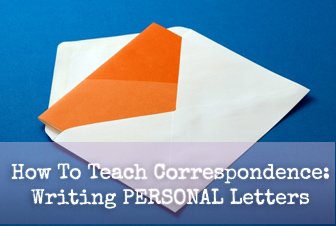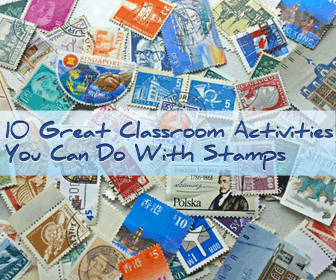How to Teach Correspondence to Your ESL Students: Writing Personal Letters


With these activities centered on stamps, your students will feel like they are exploring far off places although they will not even have to get up from their desks.

Stamps are easy to get and inexpensive, so stop by your local hobby store and buy a large bag of used stamps for your class to examine. You can give your class as much time as you want to look through the stamps and make mental notes, then see if each student can find a few stamps from the same country. If possible, stamps from different time periods are ideal. Then have each student compare and contrast each of his stamps with the others in his set. Are there any consistencies? What are the differences? Have each person share with the class his observations.
After each student has done some comparing and contrasting on his own, have groups of students compile stamps from one country. Each group should look at the symbols that are on the stamps in their collection. What can the group guess about the country of origin based on what they observe in the stamps? Can your students determine what is important to the people of the country? What historical events are portrayed? If possible, allow your groups to do some research to see if their predictions are right.
Another activity that you can use stamps for is to look at the various symbols for money used around the world. Most stamps will have some kind of monetary value printed on them, so have your students make a list of all the symbols (such as $ or ¢) that are used to represent those monetary values. Once they have the symbols, have your students find the words that those symbols represent (such as dollar and cent). You should encourage students who are familiar with other monetary systems to share their knowledge with the class and add whatever information they can to the class data compilation.
Stamps are an interesting way to get a glimpse around the world without actually leaving home. Start a stamp collection in your classroom on a large world map. As students discover stamps from a country, have them tape that stamp on or near its country on the map. Throughout the year, see how many countries’ stamps your class can collect. Encourage any students or teachers who receive letters from other nations to donate their stamps to the collection.
Do you want to make the world stamp collection more competitive? Challenge your students to a race around the world using stamps. Set up a bulletin board with each of your students’ names in a list. Then give each student a stamp from your current country. The challenge is to see who can get farthest in a race around the world using stamps. If a student locates a stamp from a country neighboring yours, put that stamp in line after the one from your current country. That student should now aim to find a stamp from a country adjacent to the second one. After he locates and posts that one, he should look for a stamp from the next country in the geographic line. In this manner, see how far around the world each of your students can get over the course of the year. If anyone is able to make it all the way around the world and “arrives” back at the starting country, hold a class celebration in honor of that person.
After your students have had some experience looking at real stamps, bring in a creative element by letting them design their own stamps. Using stamps from around the world as inspiration, have each student design a stamp of his or her own. She should think about what colors and symbols she wants to use in her design, and then, if possible, allow her to design the stamp digitally. If not, crayons and paper are always an option. Then scan the stamps and print them out to use in a class post office or just display on a bulletin board for your class to peruse at leisure.
You can find texts on stamps at different language levels at onestopenglish.com which you can use with your ESL students. There are reading selections as well as comprehension questions and additional activities ready to use in your ESL classroom.
Did you know that stamps often have hidden messages printed within the picture? This lesson plan on the micro printing in stamps may surprise you. If you and your class want to dig a little deeper into what stamps really say, take a look at this information lesson plan on micro printing.
Stamps are not the only thing a person can collect. In fact, most students will collect something: music or travel destination pennies, for example. Ask your students to write a short paragraph or two about their collection. They can include information about why they collect these items and which item in their collection is their favorite.
After writing about their collection, do a little show and tell with each of your students. Ask each person to bring in one item from his or her collection and show it to the class. Each student should give information on what the object is, how he or she got it and what he or she likes about it. Then allow your class to ask questions about the object or about the collection in general.
Try taking a closer look at what stamps have to offer. They are for so much more than just mailing letters!